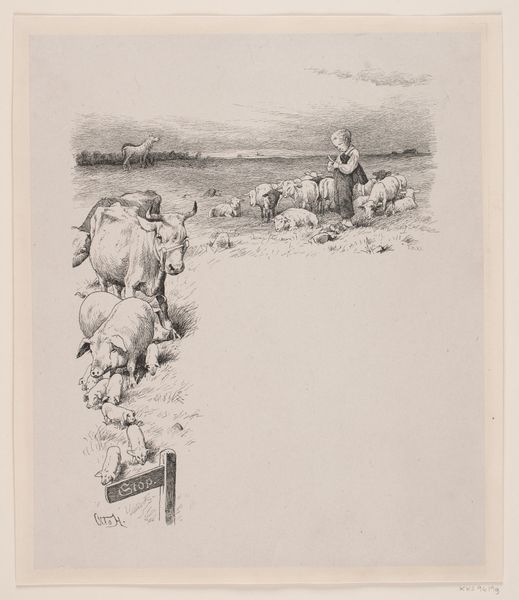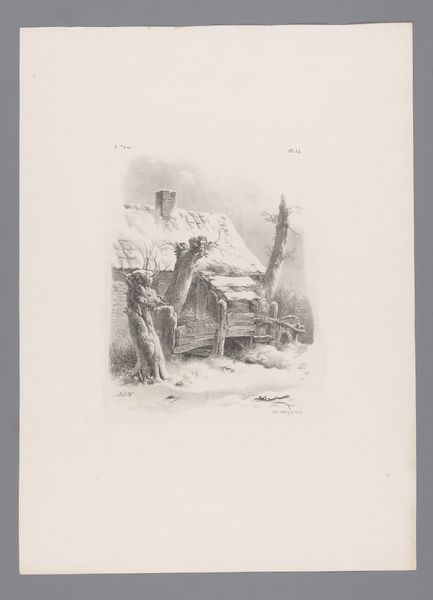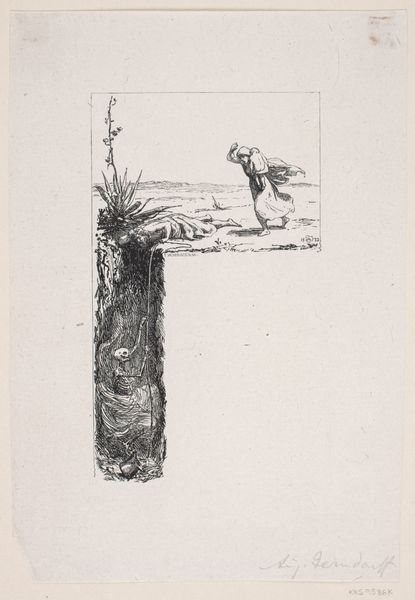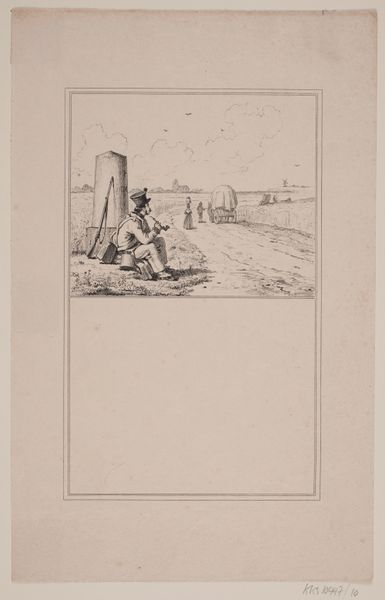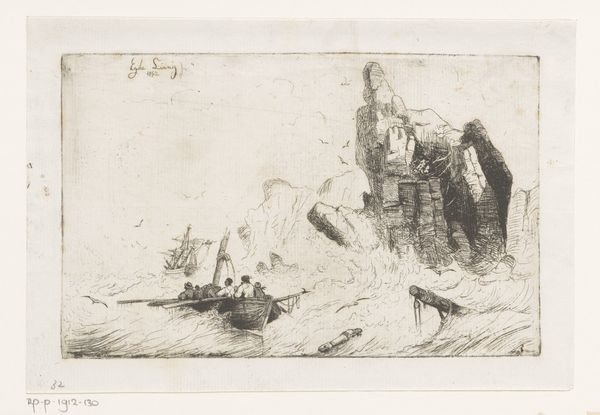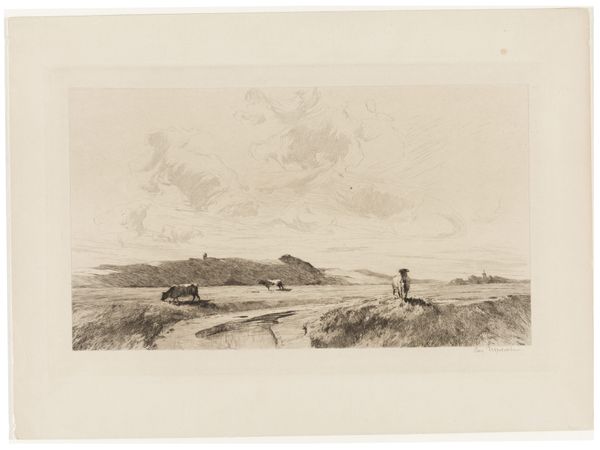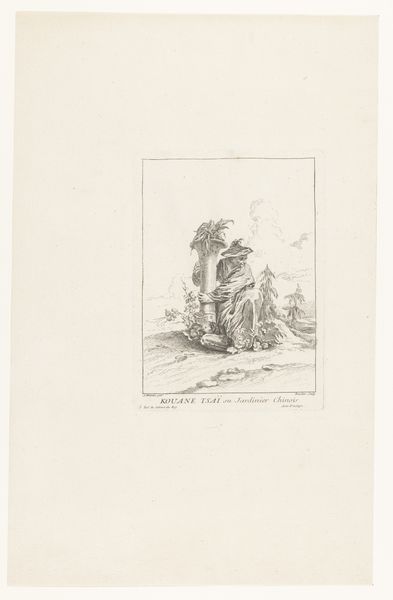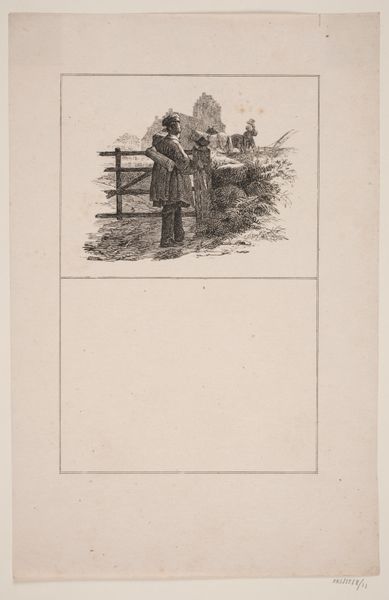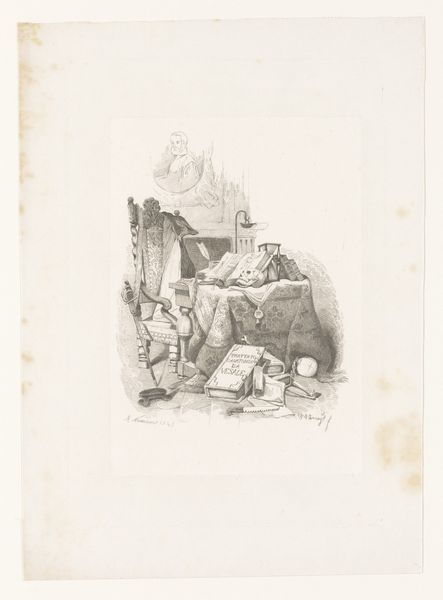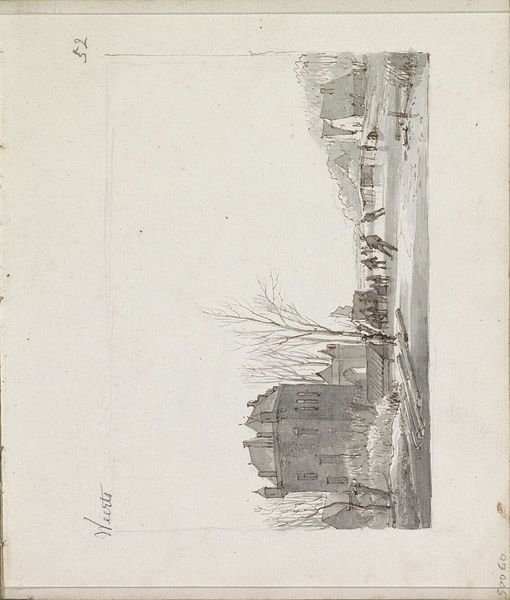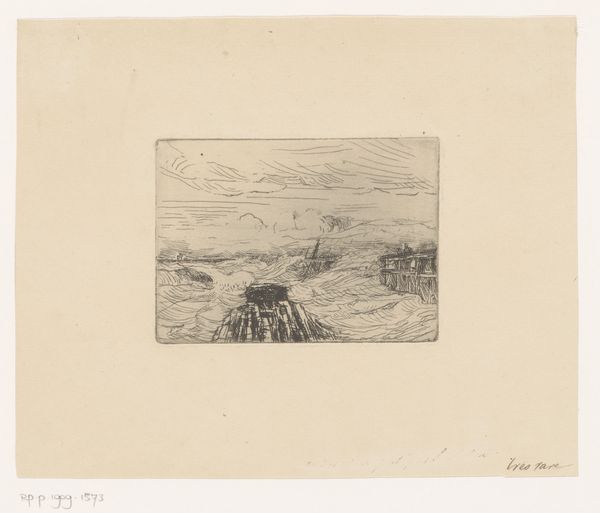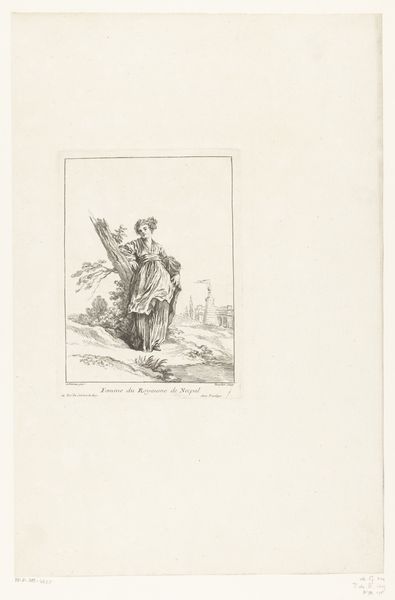
Illustration til Christian Winther, "Chresten og Lene" 1889 - 1926
0:00
0:00
drawing, print, etching, pencil
#
drawing
#
narrative-art
# print
#
etching
#
pencil sketch
#
landscape
#
etching
#
pencil
#
watercolour illustration
#
genre-painting
#
watercolor
#
realism
Dimensions: 284 mm (height) x 247 mm (width) (bladmaal)
Curator: At first glance, it feels almost dreamlike. The stark monochromatic tones give the bucolic scene a rather wistful, ethereal quality. Editor: You’re absolutely right, there is a distinct poetic air to it. What we have here is an etching with pencil and watercolor touches, "Illustration til Christian Winther, 'Chresten og Lene'," dating from 1889 to 1926, by Waldemar Bøhme. The narrative, rural theme firmly roots this work in genre painting, really reflecting a cultural interest of the time. Curator: The pastoral elements, like the sheep, pigs, and what looks like a young shepherdess, really highlight that nostalgic theme you're mentioning. It's a depiction of an idealized, pre-industrial countryside, evoking a sense of longing for a simpler past. Editor: Notice, too, how the artist has placed a 'Stop' sign among the animals. I interpret this as a conscious interruption, a moment of reflective pause. In folklore, animals often symbolize instincts and unmediated connections to nature, which become challenged as industrial advances continue to gain momentum. Curator: That's interesting because while on one hand the imagery clearly idealizes rural life, it's not without an awareness of the societal shifts happening at the time it was produced. This era, witnessing industrialization across Europe, often romanticized rural life to address concerns around that rapid societal change and loss. Bøhme likely engages in this dialogue through the narrative and the style itself. Editor: It almost speaks to a yearning for simpler ethical constructs too, doesn't it? Back then and even now, that shepherdess watching over her flock represents the virtue of care. That's very potent given how society and agriculture shifted at that time, becoming something less focused on moral duty. Curator: The illustration stands as a delicate negotiation between reality and nostalgia, inviting its viewers to contemplate their relationship with progress and tradition. Editor: Precisely, it's more than just a pretty landscape; it's an invitation to think critically about the values we inherit and choose to carry forward.
Comments
No comments
Be the first to comment and join the conversation on the ultimate creative platform.
